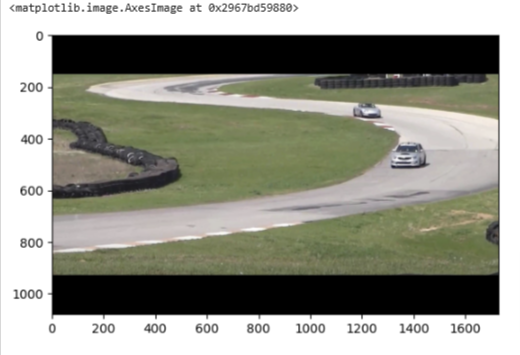~AI\computer_vision\od_projects\opencv_learn>venv_opencv\Scripts\activate
(venv_opencv) ~AI\computer_vision\od_projects\opencv_learn>jupyter notebookDownload Assets
Writing Videos
While building applications, it becomes important to save demo videos of your work as well as many applications themselves might require saving a video clip. For example, in a surveiallance application, you might have to save a video clip as soon as you see something unusual happening.
In this page, we will describe how to save a video in avi and mp4 formats using openCV.
Setup
Once again before we start activate your venv. Even though in this page we will not be using the venv remember to always activate it if you believe it is important.
I will activate it because I will be using jupyter notebook to document this process and I will use the venv kernel from within the jupyter notebook
import os
import cv2
import matplotlib.pyplot as plt
from zipfile import ZipFile
from urllib.request import urlretrieve
from IPython.display import YouTubeVideo, display, HTML
from base64 import b64encode
%matplotlib inlinedef download_and_unzip(url, save_path):
print(f"Downloading and extracting assests....", end="")
# Downloading zip file using urllib package.
urlretrieve(url, save_path)
try:
# Extracting zip file using the zipfile package.
with ZipFile(save_path) as z:
# Extract ZIP file contents in the same directory.
z.extractall(os.path.split(save_path)[0])
print("Done")
except Exception as e:
print("\nInvalid file.", e)URL = r"https://www.dropbox.com/s/p8h7ckeo2dn1jtz/opencv_bootcamp_assets_NB6.zip?dl=1"
asset_zip_path = os.path.join(os.getcwd(), "opencv_bootcamp_assets_NB6.zip")
# Download if assest ZIP does not exists.
if not os.path.exists(asset_zip_path):
download_and_unzip(URL, asset_zip_path) Read Video
Video source could be an imported file, a saved file or live camera feed as shown in the previous page
- So source could be anywhere, in this case it is a locally saved file
- Then check if the file was opened, if not print an error
source = 'race_car.mp4' # source = 0 for webcam
cap = cv2.VideoCapture(source)
if not cap.isOpened():
print("Error opening video stream or file")Let’s display One Frame
- Display one frame and use matplotlib to display it
ret, frame = cap.read()
plt.imshow(frame[..., ::-1])
Display Entire Video
- Use the library we imported earlier
video = YouTubeVideo("RwxVEjv78LQ", width=700, height=438)
display(video)Write Video
To write the video, we need to create a videowriter object with the right parameters
Syntax
VideoWriter object = cv.VideoWriter(filename, fourcc, fps, frameSize )Parameters
filename: Name of the output video file.fourcc: 4-character code of codec used to compress the frames. For example,VideoWriter::fourcc('P','I','M','1')is a MPEG-1 codec, VideoWriter::fourcc(‘M’,‘J’,‘P’,‘G’) is a motion-jpeg codec etc. List of codes can be obtained at Video Codecs by FOURCC page. FFMPEG backend with MP4 container natively uses other values as fourcc code: see ObjectType, so you may receive a warning message from OpenCV about fourcc code conversion.fps: Framerate of the created video stream.frameSize: Size of the video frames.
It is important to make sure the dimensions are accurate and match the size of the video. So we can extract it directly from the video/cap
# Default resolutions of the frame are obtained.
# Convert the resolutions from float to integer.
frame_width = int(cap.get(3))
frame_height = int(cap.get(4))
# Define the codec and create VideoWriter object.
out_avi = cv2.VideoWriter("race_car_out.avi", cv2.VideoWriter_fourcc("M", "J", "P", "G"), 10, (frame_width, frame_height))
out_mp4 = cv2.VideoWriter("race_car_out.mp4", cv2.VideoWriter_fourcc(*"XVID"), 10, (frame_width, frame_height))Read & Write
We will read the frames from the race-car video and write the same to the two objects we created in the previous step. We should release the objects after the task is complete.
# Read until video is completed
while cap.isOpened():
# Capture frame-by-frame
ret, frame = cap.read()
if ret:
# Write the frame to the output files showing both avi & mp4 formats
out_avi.write(frame)
out_mp4.write(frame)
# Break the loop
else:
breakClose & Release
# When everything done, release the VideoCapture and VideoWriter objects. NOw you have two files saved locally
cap.release()
out_avi.release()
out_mp4.release()